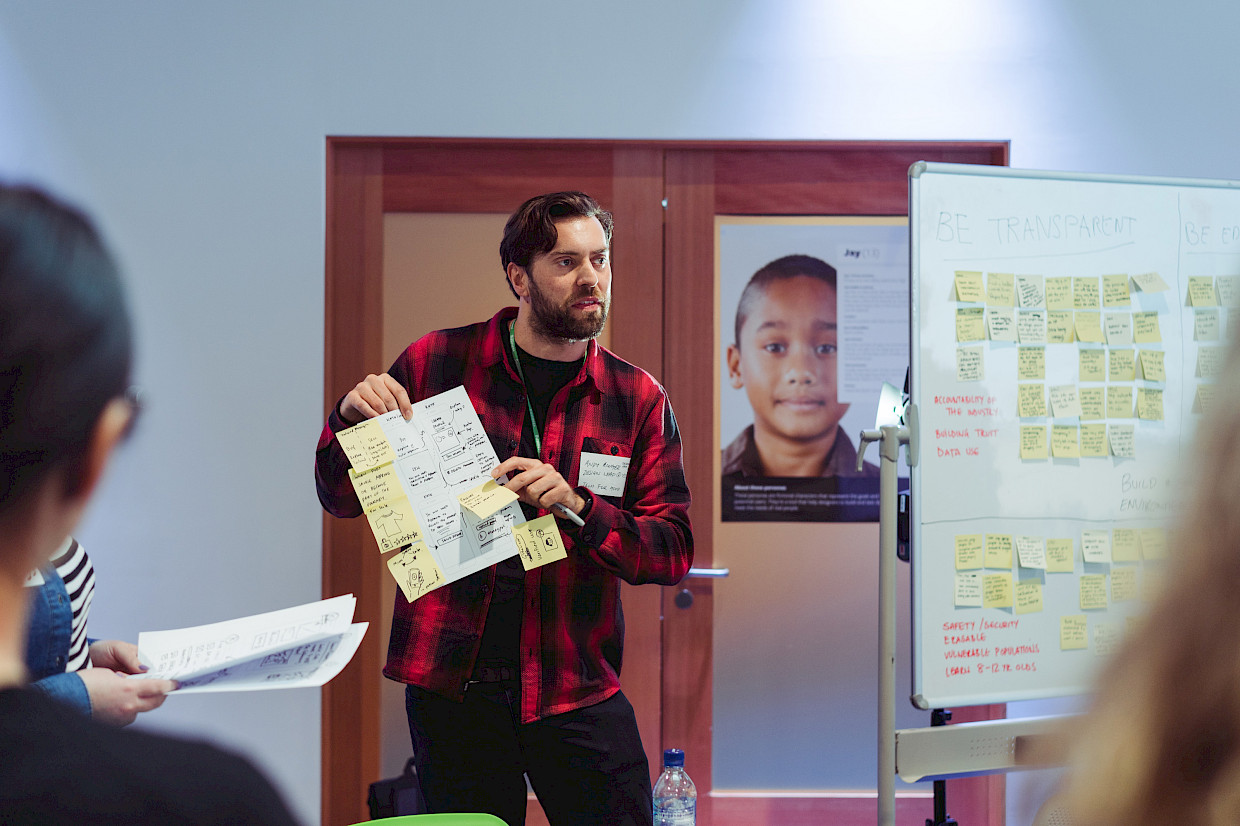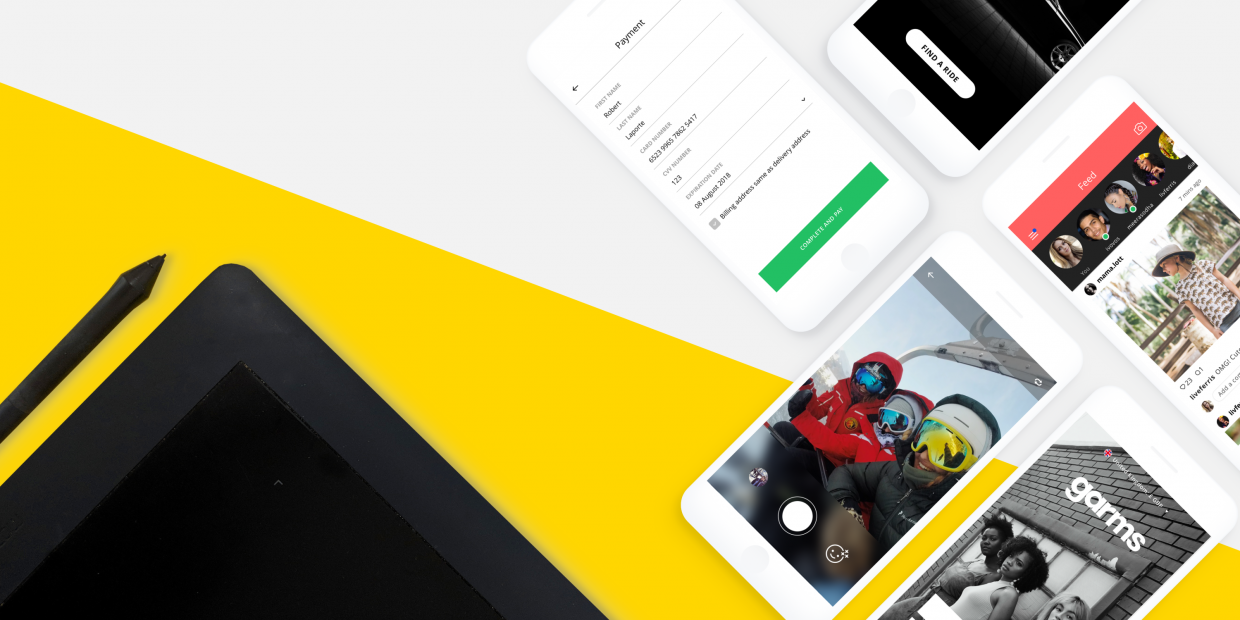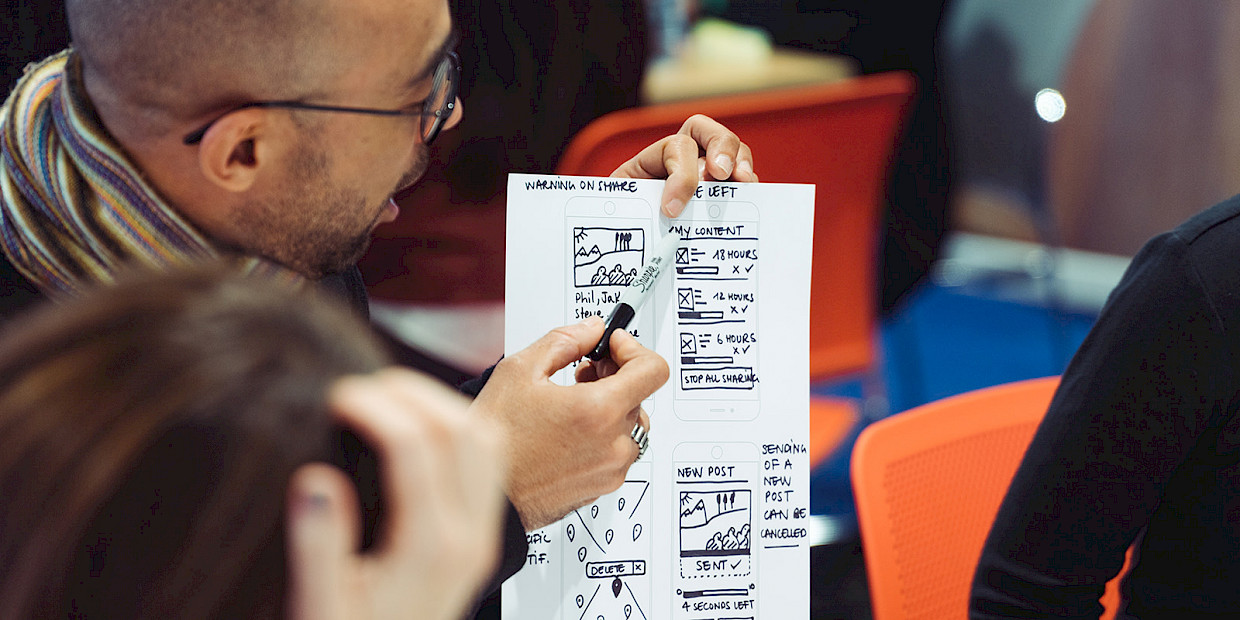Just as the digital revolution has put mobile phones and digital apps in our pockets, it's also given us an unprecedented ability to create.

Sophisticated tools that were once the preserve of high-priced consultancies can be downloaded for pennies from app stores, giving everyone the ability to realise new ideas in digital form quickly and inexpensively. At our Design Jams we move from quickly gathering cross-disciplinary insights and sharing ideas to building: first on paper, and then digitally.
As children, we learn about the world by testing its properties. We crawl on the floor, taste things we shouldn't, fall over and get up again. As we get older, we no longer need to test whether that flame is hot and should be avoided or if we should eat last week's food from the floor (only very rarely). By involving all our senses, by exploring and testing and failing, we learn quickly. As we age, more and more of the world's properties are known to us and we can rely on experience instead of experimentation. Relying on experience usually serves us well- but it can sometimes constrain thinking and creativity. Old insights gained from experience may not apply to new problems.
This is especially common in the field of law- with processes and approaches based on precedent and history. Lawyers are trained to be very precise and comprehensive- and they excel at those skills. But it doesn't always come naturally to them to adopt a hands-on approach and build - even when they have a lot to offer. That's not surprising - it's not part of the skillset they use day-to-day. Adding to this, product owners sometimes include legal colleagues only at the end for approval rather than involving them in ideas as they develop, limiting their hands-on time.
It can be very hard to understand an interface unless you get to use it, so for Design Jams, we put a strong focus on the creation of digital prototypes- not as perfect solutions or finished products, but as a positive step to fostering creativity, understanding and novel approaches.
Here are a few reasons why we take a prototype-first approach at Design Jams

Sharing prototypes to get feedback | London Design Jam | February 2018
Meld minds
Even with the best of intentions, it can be hard to really understand an idea that someone else is describing. Even when they can 'see it' clearly in their mind, finding the right words is a challenge- and we sometimes pick up the wrong thing to focus on. Getting your hands on a prototype breaks through this barrier. With a clear shared understanding of the context, feedback from others- real users or fellow design jammers- is more grounded, relevant and focused. This makes it easier to move the conversation forward rather than in circles.
Encourage iteration
When you get your hands on a prototype it's easy to test its limits, see potential and spot problems – as well as having a great jumping off point for your next idea. That doesn't mean your prototype has to be fully realised or polished – even a simple interface or interaction can get the point across better than hours of explaining. Once you've built a simple prototype the next step is obvious: test it, and then build a better one.

We designed sketch assets for 18 inspiring business templates to help set some constraints and focus for teams
Use constraints to get productive
Blank pages can be useful but they can sometimes seem like a mountain to climb. At Design Jams we also use prototype designs to help set some constraints and focus for teams. We've built a range of 'business templates' - prototype services for different types of apps and services, which we give teams in order to provide definition focus on the big and open challenges we're trying to create solutions for. By building from a working platform with some constraints, teams can get more focused on the specific challenge and context they are designing for, as well as working solely on the areas where they can add value with new ideas. With a template, the constraints are apparent rather than implied: Trying to fit a description of a tool or data use into the small screen of a mobile is much easier when you get hands on and can test solutions while you work.

Prototypes can be as simple as a line drawing or a cardboard cutout | London Design Jam - Transparency for Young People | February 2018
It's not about polish
While a glitzy digital prototypes can elicit rave feedback and a chorus of 'wows,' it's not about the polish or shiny edges. Prototypes can be as simple as a line drawing or a cardboard cutout. Even basic forms feel more tangible and easier to understand, breaking barriers to communication and encouraging feedback and iteration. Even if you don't know Photoshop from Sketch, anyone can pick up a pen, draw a phone shaped rectangle and join in. Whether you're running your own Design Jam (learn more here) or just doing some quick collaboration with others on a hard problem, think about how you can apply a prototoyping mindset from the start.
